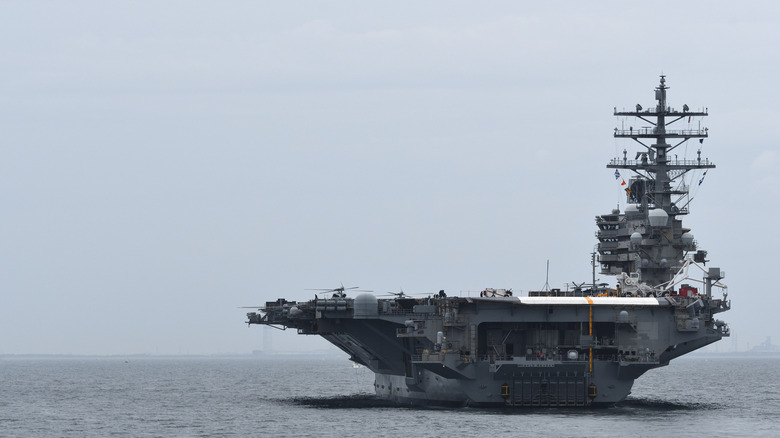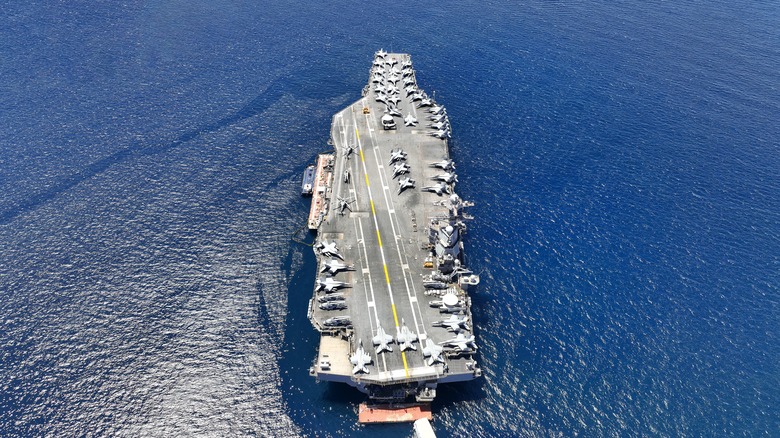How Fast Can A US Navy Aircraft Carrier Go?
We don't tend to associate aircraft carriers with speed, and often think of them as slow, lumbering airfields that actual fast things take off from. Were some sort of intramural Navy race held, one might imagine them losing to every other ship. But the average aircraft carrier would fare better than you think, and not just because slow and steady wins the race. The rise of aircraft carriers changed the course of warfare, and while the massive crafts are both designed to park and sustain a heavy military assault for months offshore, as well as move pretty quickly if needed.
Offhand, the specs certainly don't point to speed. According to the Navy, the current Nimitz-class aircraft carriers are around 97,000 tons with a full load, 1,092 feet long, 252 feet wide, and can carry up to several thousand crew members. The carrier can also hold over 65 aircraft, and is propelled through the water using two nuclear reactors. Despite the ships being a small town that somehow floats, they can travel in excess of 30 knots (or 34.5 mph), which may not be faster than your average car, but can absolutely keep up with the rest of the Navy fleet.
What that speed means and how it compares
As a comparison, a Navy destroyer can do around 30 knots as well, and a submarine ranges on average from 30 to above 40 knots. That speed comes with an almost unlimited range as a result of nuclear propulsion, meaning that the aircraft carrier can theoretically keep moving for decades at a time. The vessels are designed for 50 years of service, with only one mid-life refueling needed (the oldest has been running since 1975). This is why USS George H.W. Bush — commissioned in 2009 as the final ship of the Nimitz class carriers – is not scheduled to leave service until 2059.
The combination of range and speed makes them far more elusive targets than they seem, and they are able to keep going long after most vessels and aircraft would need to refuel. It's why America's Navy describes them as "four and a half sovereign acres of U.S. territory," and why being onboard one might be one of the safer places to be during a global war, and not just because it's doing a safe speed of 35 mph.

